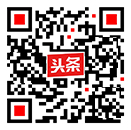[1] WORLD HEALTH ORGANIZATION.Global tuberculosis report 2021[EB/OL]. [2021-12-06]. https://www.who.int/teams/global-tuberculosis-programme/tb-reports/global-tuberculosis-report-2021.
[2] WORLD HEALTH ORGANIZATION.Global tuberculosis report 2022[EB/OL]. [2023-03-03]. https://www.who.int/teams/global-tuberculosis-programme/tb-reports/global-tuberculosis-report-2022.
[3] 宋敏,陆普选,方伟军,等.2022年WHO全球结核病报告:全球与中国关键数据分析[J/CD].新发传染病电子杂志,2023, 8(1):87-92.
[4] WORLD HEALTH ORGANIZATIO.WHO consolidated guidelines on tuberculosis. Module 4: Treatment-drug-resistant tuberculosis treatment[EB/OL].https://www.who.int/publications/i/item/9789240007048.
[5] 余卫业, 谭卫国, 陆普选. 耐药肺结核的分类、分型及影像学表现[J/CD]. 新发传染病电子杂志, 2019, 4(1):42-47.
[6] 中国医疗保健国际交流促进会临床微生物与感染分会, 中华医学会检验医学分会临床微生物学组, 中华医学会微生物学和免疫学分会临床微生物学组, 等. 综合医院结核分枝杆菌感染实验室检查共识[J]. 中华检验医学杂志, 2022, 45(4):343-353.
[7] SUN CX, HE B, MU D, et al.Public Awareness and Mask Usage during the COVID-19 Epidemic: A Survey by China CDC New Media[J]. Biomed Environ Sci, 2020, 33(8):639-645.
[8] 程曦, 李亚斐, 饶英, 等. 2271例结核病患者耐药情况的流行病学特征分析[J].重庆医学, 2015, 44(12):1635-1637.
[9] 杨安文, 周亮, 徐祖辉, 等. 湖南省肺结核四种一线抗结核药物耐药特征及影响因素研究[J]. 中国人兽共患病学报, 2018, 34(5):396-403.
[10] 杨新宇,易俊莉, 邢青,等.881例疑似耐多药肺结核患者的耐药性分析[J]. 中国防痨杂志, 2018, 40(2):183-188
[11] SAIFULLAH A, MALLHI T H, KHAN Y H, et al.Evaluation of risk factors associated with the development of MDR-and XDR-TB in a tertiary care hospital: a retrospective cohort study[J]. Peer J, 2021,9:e10826.
[12] WORKICHO A, KASSAHUN W, ALEMSEGED F.Risk factors for multidrug-resistant tuberculosis among tuberculosis patients: a case-control study[J]. Infect Drug Resist, 2017,10:91-96.
[13] 黄海荣, 王隽, 初乃惠. 结核病患者N-乙酰基转移酶2编码基因多态性检测与异烟肼合理用药专家共识[J]. 中国防痨杂志, 2021, 43(11):1107-1112.
[14] HONG BL, D'CUNHA R, LI P, et al. A Systematic Review and Meta-analysis of Isoniazid Pharmacokinetics in Healthy Volunteers and Patients with Tuberculosis[J]. Clin Ther, 2020, 42(11):e220-e241.
[15] 卢春容,谭卫国,卓志鹏,等. 1999-2015年深圳市结核病细菌耐异烟肼、利福平流行趋势分析[J/CD]. 新发传染病电子杂志, 2017,2(1):10-13.
[16] 杜建, 钟球, 傅衍勇, 等. 复治肺结核患者初治时使用利福类药物剂量的调查[J].中国防痨杂志, 2016,38(1):42-46.
[17] 郭少晨, 朱慧, 郭超, 等. 909例结核病患者一线抗结核药物血药浓度监测结果分析[J]. 中国防痨杂志, 2018, 40(7):744-749.
[18] 付亮,廖伟明,张惠华,等. 含异烟肼耐药的耐药结核病临床特点和治疗方案的回顾性队列分析[J/CD].新发传染病电子杂志,2021, 6(4):306-310.
[19] 中华医学会结核病学分会. 中国耐多药和利福平耐药结核病治疗专家共识(2019年版)[J]. 中华结核和呼吸杂志, 2019, 42(10):733-749. |




